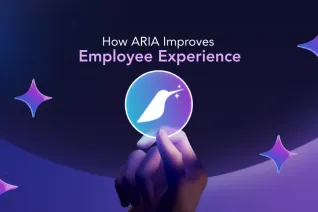Convenience drives behavior, from streaming entertainment to one-click deliveries, and waiting two to four weeks for a paycheck feels increasingly outdated. Employees today expect immediacy, flexibility, and control, not just in their work but in how they access their earnings. Enter Pay on Demand, a transformative solution reshaping how organizations support financial wellness and employee satisfaction.
Understanding Pay on Demand
Pay on Demand is a financial service that enables employees to access a portion of their earned wages before their traditional payday. Unlike payday loans, this model does not involve borrowing, interest, or credit checks. It simply provides early access to wages that employees have already earned.
At its core, Pay on Demand integrates directly with an organization’s payroll or workforce management system. Each time an employee works a shift or logs hours, their earnings are tracked in real-time. Employees can then withdraw a defined portion, such as 50% of their earned wages, through an app or portal, and the system automatically reconciles it during the next pay cycle.
This model represents a subtle but profound shift from fixed payroll cycles to fluid, employee-centric pay models. It’s already gaining significant traction across regions such as the United States, the United Kingdom, Australia, and parts of Europe, where Earned Wage Access (EWA) regulations are well-established and technology adoption is high.
Meanwhile, emerging markets in Asia, the Middle East, and Latin America are exploring frameworks to implement Pay-on-Demand.
Why Pay on Demand Matters in Today’s Workforce
The modern workforce is more dynamic than ever. Gig workers, part-time employees, and global teams have redefined the notion of “standard pay cycles.” At the same time, financial stress has become a silent productivity killer.
- According to PwC’s 2023 Employee Financial Wellness Survey, 57% of employees say money worries are their top source of stress.
- Employees who experience financial stress can negatively affect their work performance.
- In the U.S., employers collectively lose an estimated $183 billion annually due to an average of 7 hours of productivity loss resulting from employee financial stress.
These numbers reflect a global truth: employees need more flexible access to their earnings to manage real-world financial demands, including utility bills, medical emergencies, and unexpected travel.
By offering Pay on Demand, employers can directly address these concerns, thereby improving both financial resilience and employee engagement.
ALSO READ | On-Demand Pay Explained: What It Is and How It Works
How Pay on Demand Works
-
Integration with Payroll Systems:
The employer’s payroll or HRIS (Human Resource Information System) syncs with a Pay on Demand platform. This ensures real-time tracking of accrued earnings based on approved work hours.
- Employee Access:
Through a mobile app or web dashboard, employees can view their available balance and request a payout at any time. Most platforms allow instant or same-day transfers to bank accounts or digital wallets.
- Automated Reconciliation:
During the next pay run, the withdrawn amount is automatically deducted from the employee’s paycheck, maintaining payroll accuracy without additional administrative burden.
- Security and Compliance:
Reputable Pay on Demand providers comply with regional wage laws and ensure data protection. Integration with global payroll platforms, such as Neeyamo’s Global Payroll Hub, ensures cross-border scalability and consistency in compliance.
Key Benefits for Employers
- Enhanced Employee Retention and Attraction:
Offering on-demand pay is becoming a key differentiator in an increasingly competitive landscape. In tight labor markets, particularly in industries such as retail or hospitality, this flexibility attracts and retains top talent.
- Boosted Productivity:
When employees aren’t preoccupied with financial concerns, they can focus better at work. Reduced absenteeism and higher morale are natural outcomes.
- Improved Employer Brand:
Today’s employees are drawn to organizations that prioritize employee well-being. Offering financial flexibility sends a strong message that the company values employee empowerment.
- No Financial Burden on Employers:
Most Pay on Demand models are funded by third-party providers, meaning employers don’t face liquidity constraints or added costs.
Key Benefits for Employees
- Financial Flexibility:
Employees gain control over when they receive their pay. Whether it’s covering an urgent bill or taking advantage of a timely opportunity, EWA eliminates the “waiting game.”
- Avoiding Debt Traps:
Unlike payday loans or credit advances, EWA provides access to earned wages, not borrowed money, helping employees sidestep high-interest debt cycles.
- Enhanced Financial Wellness:
Many Pay on Demand solutions come with in-app budgeting tools, spending insights, and financial education, helping employees make informed money decisions.
- Global Accessibility:
For multinational organizations, integrating EWA across geographies ensures consistent employee experiences, regardless of currency or local pay cycles.
Challenges and Considerations
While the concept is compelling, implementing Pay on Demand requires careful strategy.
- Regulatory Differences:
Compliance standards vary across countries. For example, in the U.S., EWA is regulated under consumer finance laws, while in Europe, it falls under wage disbursement frameworks. Global organizations must tailor implementations to local requirements.
- Financial Planning Concerns:
Frequent early withdrawals might make it harder for some employees to budget over longer periods. Therefore, pairing EWA with financial literacy programs is critical.
- Technology Integration:
Seamless integration between HR, payroll, and payment systems is crucial to ensure accuracy and prevent duplicate counting.
ALSO READ | Earned Wage Access (EWA): A Complete Guide to Improving Employee Financial Wellness
Pay on Demand: A Step Toward Payroll Evolution
Traditionally, payroll systems were designed around employer convenience, processing batches on a bi-weekly or monthly basis. But the digital era demands employee-centric payroll ecosystems. Real-time data, cross-border payments, and financial inclusivity are now the driving forces behind payroll transformation.
The Broader Impact on Financial Well-Being
In April 2025, the International Labor Organization reported that up to 85% of Earned Wage Access (EWA) users experienced lower financial stress, with employers noting that EWA contributed to better employee retention and enhanced productivity.
When people have immediate access to the money they’ve earned, they gain peace of mind, and that peace translates into better focus, motivation, and retention. For employers, it’s a win-win that aligns financial empowerment with organizational performance.
Looking Ahead
As the global workforce becomes increasingly decentralized, traditional payroll cycles will continue to lose relevance. The future points toward real-time pay ecosystems, a blend of automation, compliance, and flexibility. Pay on Demand is a crucial first step in that direction.
By adopting EWA, organizations aren’t just offering a benefit; they’re acknowledging a fundamental truth of the modern era: financial well-being is directly tied to business well-being.
In essence, Pay on Demand isn’t just a convenience; it’s a strategic advantage. It transforms payroll from a static back-office function into a dynamic employee experience, redefining how people work, earn, and thrive. Reach out to us here or write to us at irene.jones@neeyamo.com to know more!
















